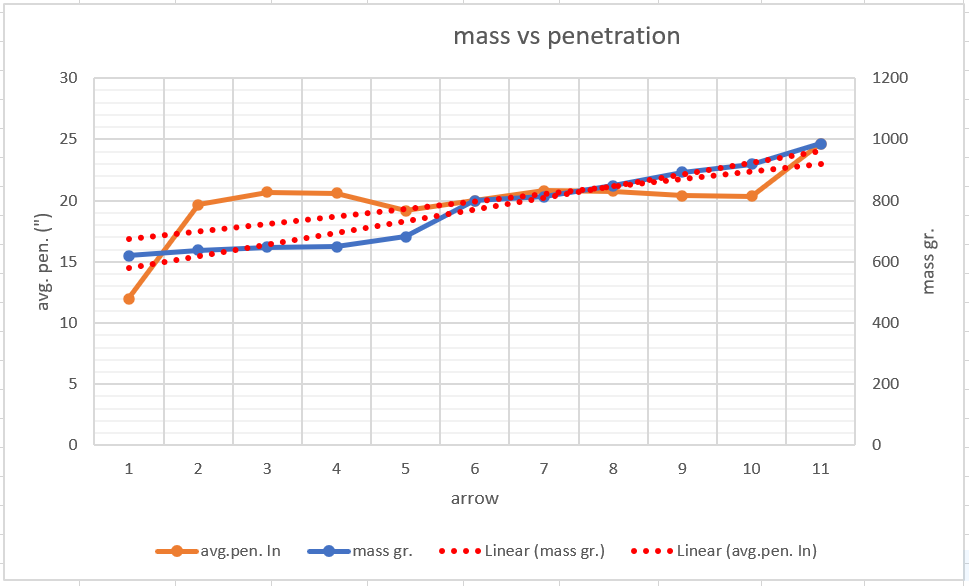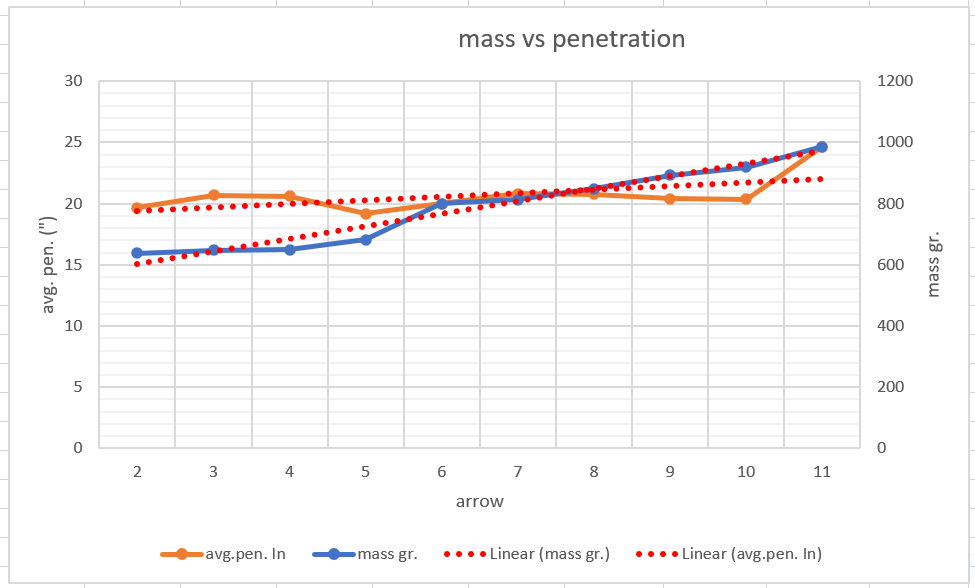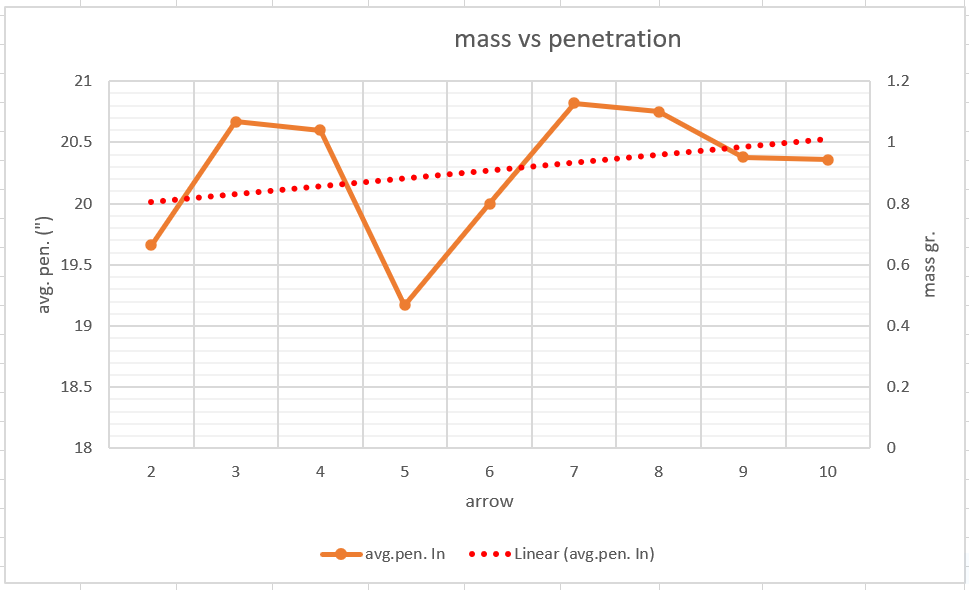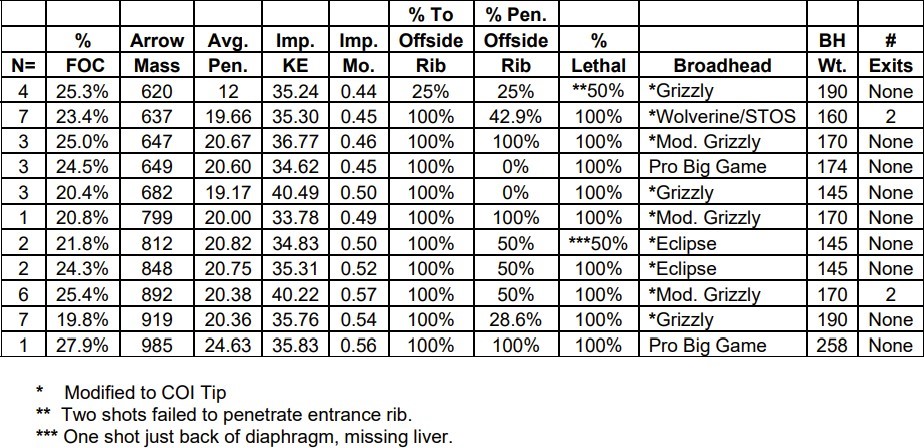I have been going back through the Dr. Ashby studies and looking at his testing and results. Doing this has brought up thoughts. I thought I would address some of Dr. Ashby’s data from my opinion and how I interpret the data. I’m only going to write about the high lights as I see them. I recommend that you look up the studies and read for yourself. Here is a link to the studies https://www.ashbybowhunting.org/ashby-reports.
Arrow Lethality Part 2
I found it interesting about animals tested up to this point. Dr. Ashby shows he tested impala and bushbuck (average weight from 106lbs. to 143lbs.), warthogs (154lbs. to 220lbs.), nyala (198lbs. to 299lbs.), wildebeest (473lbs. to 550lbs.), and zebra from 700lbs. to 1000lbs.). Looking at this, I don’t see why people are so hung up on saying his test does not cover North America. It would be nice to see a study on whitetail deer.
In this study, he shows that “measured penetration on shots striking similar tissue was suggestive that there is a definite lower limit to arrow mass, regardless of shaft material, for adequate penetration, even with the best of the broadheads were used. Consistently reliable adequate penetration appeared to require a total mass of at least 650 grains if any bones were encountered on the animal of moderate size. There also appears to be a marked increase in penetration occurring when the total mass was in the 900gr range.”
“based on test results, no responsible bowhunter using a multiple blade head should take a shot at even a modest-sized animal that is facing him or angling toward him.”
I’m sure this statement is based on the testing showing that single bevel broadheads had a 22.1% total penetration vs. 10.4% on multiple blade broadheads. In this section, Dr. Ashby has lots of information on penetration. I recommend you taking the time and read.
Arrow lethality part 3 is about broadheads. Recommended reading.
Arrow lethality part 4
Part 4 is the physics of arrow penetration. This one, I’m afraid I have to disagree. In this part, he is trying to discredit kinetic energy. From this point in most of the papers moving forward, he is trying to discredit.
People need to understand that an arrow’s kinetic energy is always there if the arrow is moving.
From a physics aspect
- Momentum is a measurement of the force of the forward movement of an object. Momentum has a vector or direction. You can change the direction by applying another vector
- KE is a measurement of the energy a moving object possesses, but it has no
- KE tells you how hard an arrow will hit. KE transfers from the tip of the broadhead to the deer hide on impact, and if the energy at the very tip of the BH is greater than the energy holding the hide together, the tip will penetrate. But as said, the energy has no real “direction,” so on impact, all kinds of stuff happens to the arrow as it releases energy. It flexes, vectors, and also continues in the original line or travel. It does not stop until it is out of
- Momentum is what makes it harder to slow the arrow down, and also – most importantly, it helps keep the arrow on its original line of travel; it’s harder to deflect. This means the arrow gets to release more of its energy in driving a straighter line through the animal – so yeah, it goes through stuff better. It takes energy transfer to break a bone, etc., and the less than 1 slug of momentum is nothing compared to the 60 – 70# of KE of an arrow – except that it enables that KE to be more efficiently delivered in a straighter line.
- After impact, an arrow still has lots of KE to give up somewhere until the velocity is You really can’t separate KE and Momentum. Momentum is important because it keeps the energy transfer where you most want it – at the tip of the BH in the line you shot. You can’t separate the two
Arrow lethality part 5
This one is interesting. In this part 5, Dr. Ashby is looking at another method to predict penetration. He calls it Tissue Penetration Index (TPI). I am going to touch on this one. I think this would be a great way to predict penetration, but even Dr. Ashby states more testing must be done.
To calculate TPI, momentum*MA*shaft diameter to broadhead. For the equation shaft diameter
- Broadheads greater to shaft=1
- Broadheads are the same as shaft=.9
- Broadheads are smaller than shaft=.6 Useful information in this
2004 broadhead & arrow lethality study update, part 2
In this part of the study, he looks at different
arrow types and weight to compare penetration. Here he looks at the mass, ke, and momentum. In this section, he is comparing several arrows. In the first test, he has two sets of arrows he tested. The ke is within 1.6% the momentum is 13.6% greater with the heavier arrows. The heavier arrows are 35.9% heavier, with 14.9% less in velocity. The heavier arrows showed a penetration increase of 33.29%. Again he talks about KE meaning nothing, and the momentum is the predicter. This is false. What caused the 33.29% increase in penetration, the 35.9% increase in mass.
Next, he compared an arrow at 138% more kinetic energy. He did this by shooting a different bow and a lighter arrow. This arrow also had 10.3% more momentum. The arrow had 12.8% less penetration. Now, he does state that looking at the momentum, the lighter arrow should out penetrate, but it doesn’t. The reason is mass. By looking at this test, we know that momentum is not a predictor of two different bows and set up. Mass is the predicter.
Arrow lethality study update 2005 part 1
Here he talks about broadheads and tip designs. Edge sharpness and broadhead setups he is testing. One thing he stated is “the kinetic energy and momentum measurements referred to throughout the updates are the levels at impact, not those as the arrow leaves the bow.”
That is an important part to remember as most people take this measurement at the bow and not the target.
Arrow lethality study update 2005 part 2
Now this one I broke down. I saw some interesting variables. In his testing, the variables were not shooting the same broadhead or the setups the same amount. In his chart, you will also see KE variations. I would conclude this comes from shooting his longbow and not having repeatable releases. For me, this doesn’t matter as it is within a percent of err in testing.
The charts their self’s are not from Dr. Ashby. The charts or done by PNL TESTERS based on the test data provided by Dr. Ashby.
 It is odd that we teach people that as you go up in mass, so will penetration. But if you notice, this didn’t happen except for the least amount with the 620gr and the most with the 985gr arrow. Here you can see he tested eleven arrows with mass from 620gr to 985gr. All arrows have an EFOC set up. The gain/lost% part of the chart is compared to the 620gr arrow. You will notice gains and losses in mass, EFOC, avg. penetration, KE, and momentum. It also shows the number of times each arrow was shot.
It is odd that we teach people that as you go up in mass, so will penetration. But if you notice, this didn’t happen except for the least amount with the 620gr and the most with the 985gr arrow. Here you can see he tested eleven arrows with mass from 620gr to 985gr. All arrows have an EFOC set up. The gain/lost% part of the chart is compared to the 620gr arrow. You will notice gains and losses in mass, EFOC, avg. penetration, KE, and momentum. It also shows the number of times each arrow was shot.
Here is a chart looking at the mass vs. penetration

In this chart, it shows a trend of as mass is increased penetration increased. But let’s remove the lightest and the heaviest arrow.

Now, if you look at it, you can see that from arrow 2 (637gr) through arrow 10 (919gr), there was only a 5.84% increase in penetration. Let’s remove the mass from the chart to take an even better look at the penetration gain.

Now we must look at why as this goes against physics and what we are taught. Looking at this chart, there would be zero reasons to shoot any arrow above 637gr. In soft tissue. Why lose the trajectory for less than 5% penetration gain.
Let’s look at the chart from Dr. Ashby.

Is momentum being a predictor for penetration? Arrow 9 (892gr) had a .57momentum. But yet only 50% of the 6 arrows tested penetrated the off rib. Out of those, only two were a pass-through. If we compare it to arrow 2 (637gr.) with .45 momentum. The heavier arrow has 26.67% more momentum but almost performed as well as the arrow with 40% more mass. I feel it’s in the broadhead. It does go to show that increasing mass is not always the best way to improve penetration. Looking at the broadheads used, you can see he was changing which broadhead. Here you can see why there was a variance in the test. In my opinion, this skews the test.
Part 2 of my Ashby Analysis will be a continuous look at the studies and my opinion.
